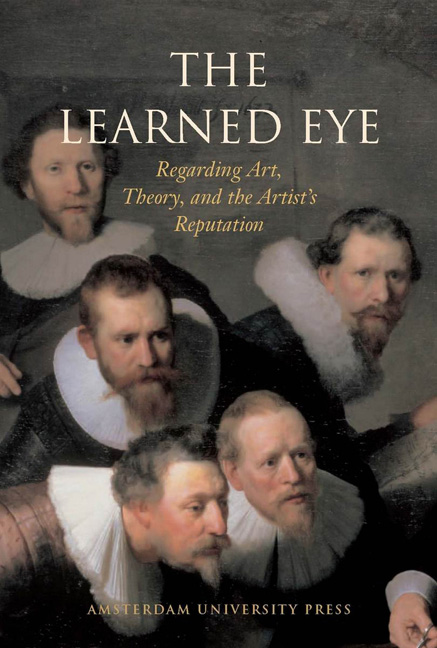The Use of Wood in Rembrandt’s Workshop. Wood Identification and Dendrochronological Analyses
Published online by Cambridge University Press: 25 January 2021
Summary
Introduction
Though art historians in general are more observative towards the frontside of paintings, the back can be of great interest too.* Backs often carry stickers and inscriptions that give telling insides into the painting's provenance. But the support itself can also contain a wealth of information. Seemingly endless afternoons of thread-counting by members of the Rembrandt Research Project have generated valuable knowledge on the use of canvas in seventeenth-century workshops, and especially in Rembrandt's studio. The same is true for Rembrandt's use of wood as a support, though the counting and measuring was this time mainly carried out by dendrochronological specialists from abroad, amongst whom the present author. The back and sides of the panels used in Rembrandt's studio have proven to be very telling, although they do not easily yield their secrets at first sight.
Our knowledge on wood in relation to art-historical problems has risen considerably during the last decades. It is well known that certain wood species were preferred for paintings in different European countries. In Italy the wood most commonly used was poplar, while in the Netherlands, France and England oak panels that were strong and durable were generally used. Marette demonstrated in her book Connaissance des primitives par l’étude du bois, published in 1961, that different wood species were used in several European countries. Using many diagrams and tables, she showed the existence of certain ‘wood-preferences’. A number of historical maps showed the distribution and types of European forests. At the time, she could however not yet give a description of the specific use of wood species in different workshops. Nowadays, it is no longer generally thought that in the same workshops several different kinds of wood were used.
During the last twenty years, microscopical analyses of species in combination with dendrochronological research have been undertaken for several museum catalogues at the university of Hamburg. The output of a number of workshops has been analysed, with special attention to the identification of different wood species used as supports for panel paintings. That was done for a lot of different workshops in Europe, but above all the panels of Rembrandt and his students and assistants were analysed.
- Type
- Chapter
- Information
- The Learned EyeRegarding Art, Theory, and the Artist’s Reputation, pp. 28 - 38Publisher: Amsterdam University PressPrint publication year: 2005



